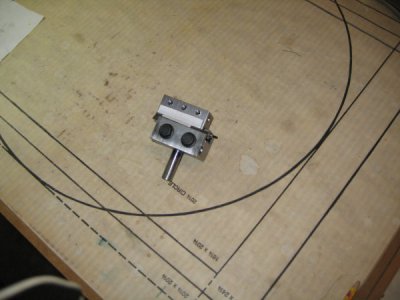Was able to get back to the boring head today and got a fair amount done before the mid 90's temperature in the garage drove me inside.
I knew that I would never be able to drill the head and the pin separately and have the holes line up. So I put everything together and first drilled a hole for the 1/4-20 tap all the way through.
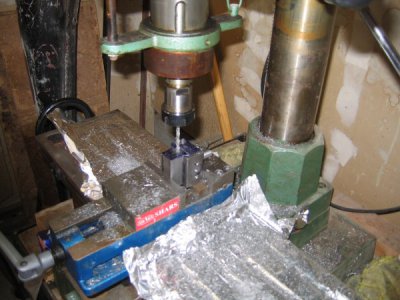
Then I drilled just one end of the head to 1/4" and used this hole as a guide to tap the center pin.
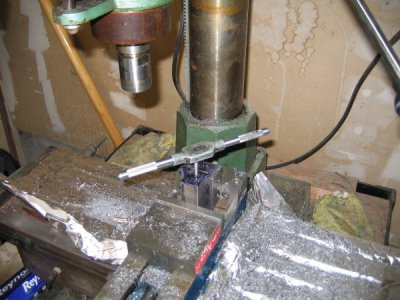
Then I drilled the other end of the head to 1/4." Screwed a long 1/4-20 machine screw through everything with a nylock nut on the end just tight enough to take out the play. Easy to turn the screw and the head moves smoothly in the body. There is just under .75" of travel. Over to the lathe to drill the center hole in the head. I decided to use 3/8 boring bars. Started the hole with a center drill
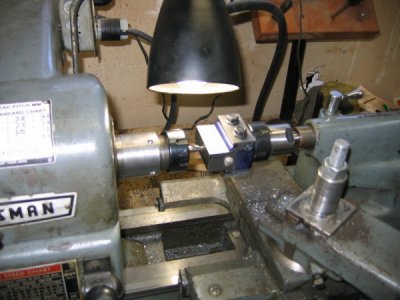
and finished with 23/64 drill. I was planing to use a 3/8 end mill to finish off the hole but the hole ended up at 3/8" using the 23/64 drill.
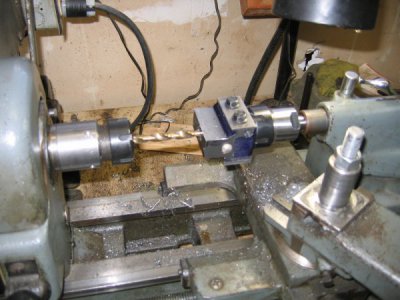
By now it was too hot to continue working in the garage even with my fan at full speed. Into the house. I do not have any means to accurately divide a circle into 50 segments and the marks on the end of the head would have been hard to see. I looked at my vernier caliper and thought that I could simply use it as a guide to mark the side of the head.
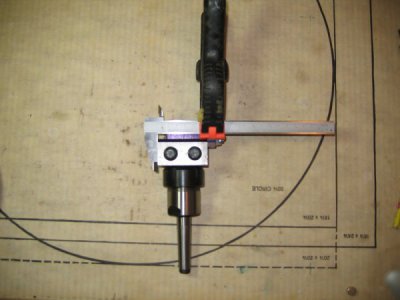
Well that didn't work too well trying to keep everything in place while I tried to hold a magnifying glass and scratch the lines. Next idea was to again use the caliper as a guide to mark the lines onto a piece of paper.
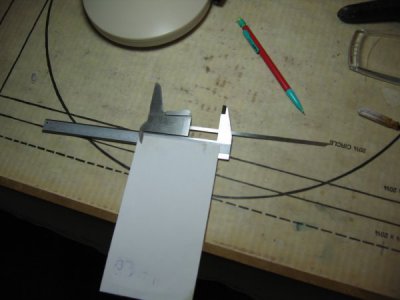
That didn't work either. Finally I went to sketchup and drew the lines and the vernier scale.
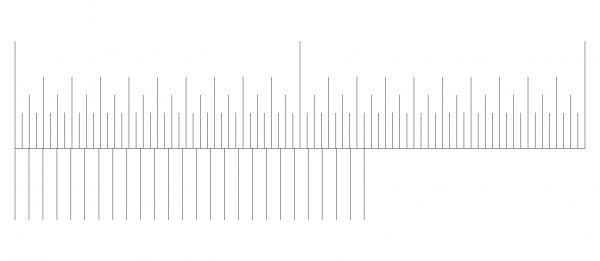
This worked. I was able to print this out and used double stick sailmakers tape to attached the drawing to the boring head. The sailmakers tape has really good holding power. I might put some clear lacquer over it to seal the paper so I can clean it
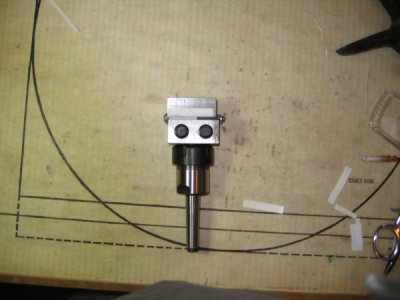
Once attached I cut the scale in two with a sharp knife. The dimension lines are attached to the head and the vernier scale is attached to the body. Everything lines up. I can easily read to .001 and with effort to maybe ,0005. Still have more to do but I am getting there










